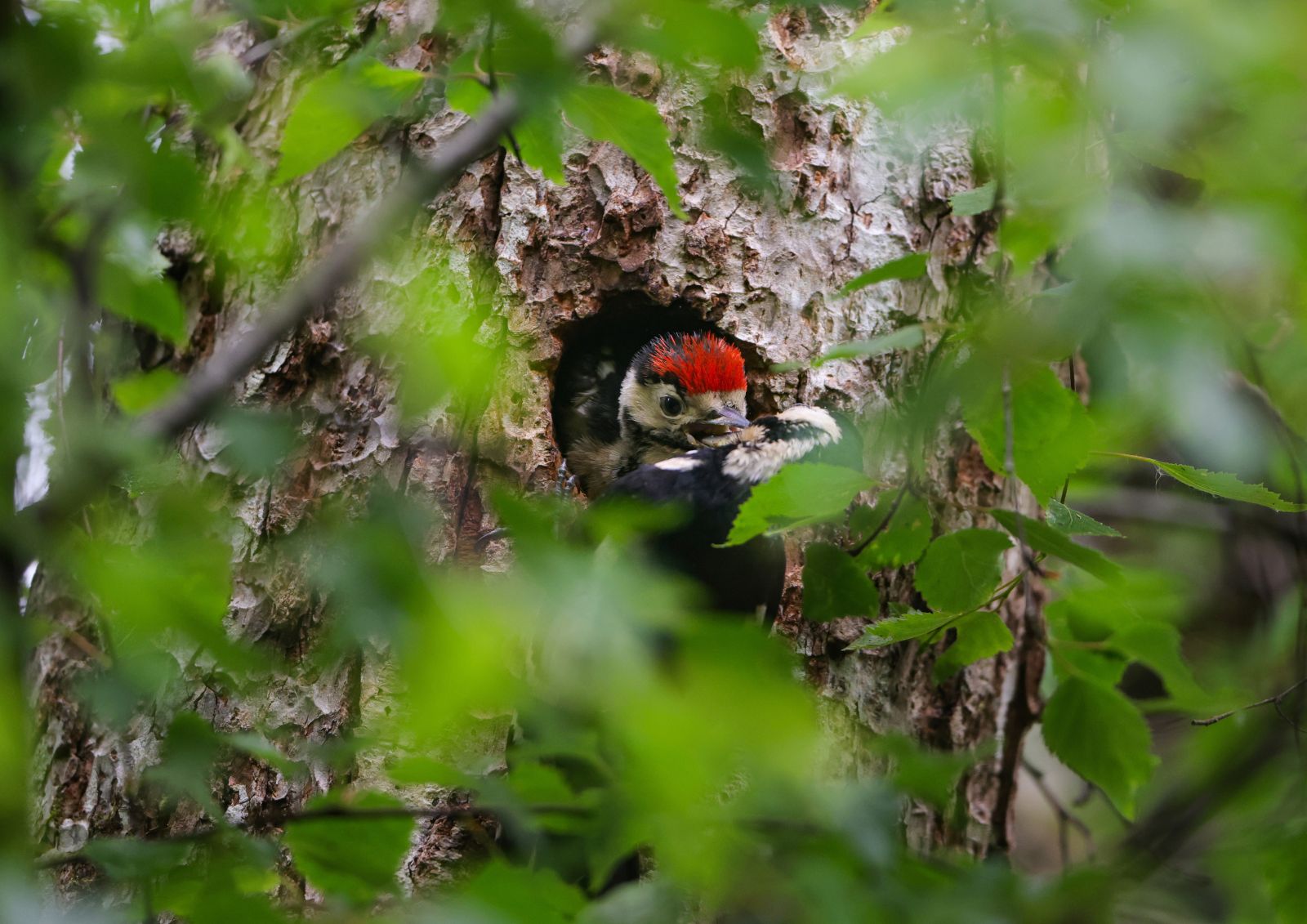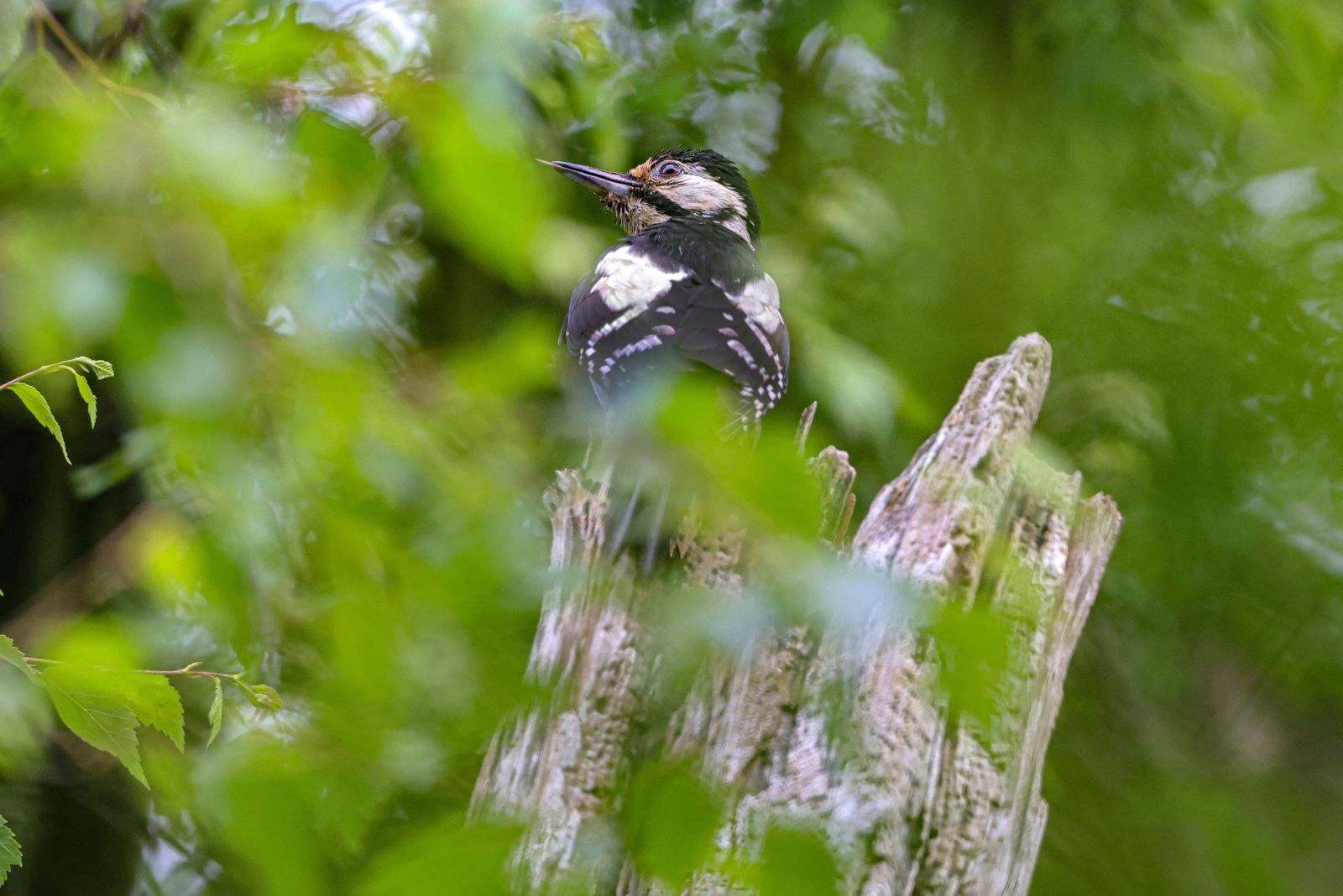News
Excitement in Killarney following first breeding of guess who? The Great Spotted Woodpecker
Date Released: Wednesday, June 5, 2024
In recent weeks, staff and visitors at Killarney National Park have been entertained by the iconic sound of unexpected visitors – the Great Spotted Woodpecker. A breeding pair was confirmed for the first time to have produced a small number of chicks in the Park. The chicks are becoming more and more vocal each day as they prepare to fledge.
Great Spotted Woodpeckers appear to have gone extinct in Ireland following deforestation in the 17th and 18th centuries. The first recorded sighting of a Great Spotted Woodpecker for Killarney National Park was in 2013, where it was observed in the Tomies Wood area. This new development is significant as it is the first recorded breeding activity within the Park. Breeding was recently confirmed by Sam Bayley, NPWS Conservation Ranger as he was ringing birds in the Park as part of a British Trust for Ornithology (BTO) scheme. This was followed by reported sightings of chicks by wildlife enthusiasts and bird watchers in the Park.


Eamonn Meskell, NPWS Divisional Manager at Killarney National Park said:
“There’s huge excitement here in Killarney since these birds were spotted over the past few weeks. Woodpeckers like to spend time in areas where there are mature trees. The Park with its mature oak woodlands provides the perfect nesting and feeding opportunities for them.”
Niall Ó Donnchú, Director General of NPWS said:
“Stories like this reflect some of the unexpected treasures that can be found in our National Parks and Nature Reserves, and that our staff are working hard to protect.”
The Great Spotted Woodpecker is about the size of a starling. Both males and females are black and white with scarlet red underneath their tails. Woodpeckers have very long sticky tongues and feed on insects found in wood, as well as pine cones in autumn. During the breeding season, they may take the eggs and chicks of other birds.
